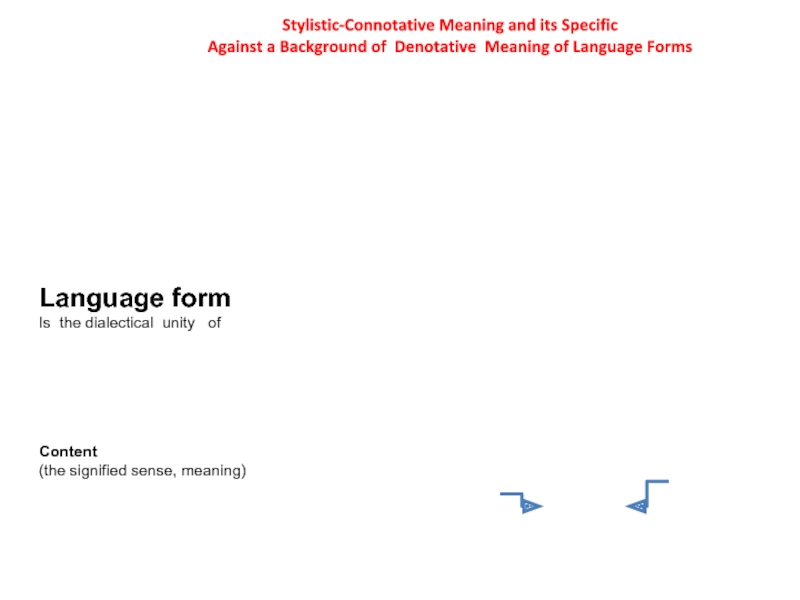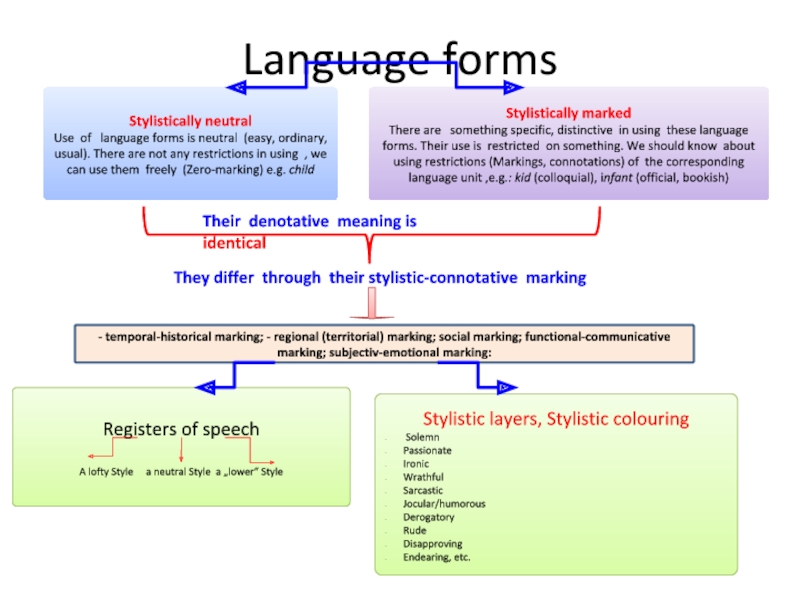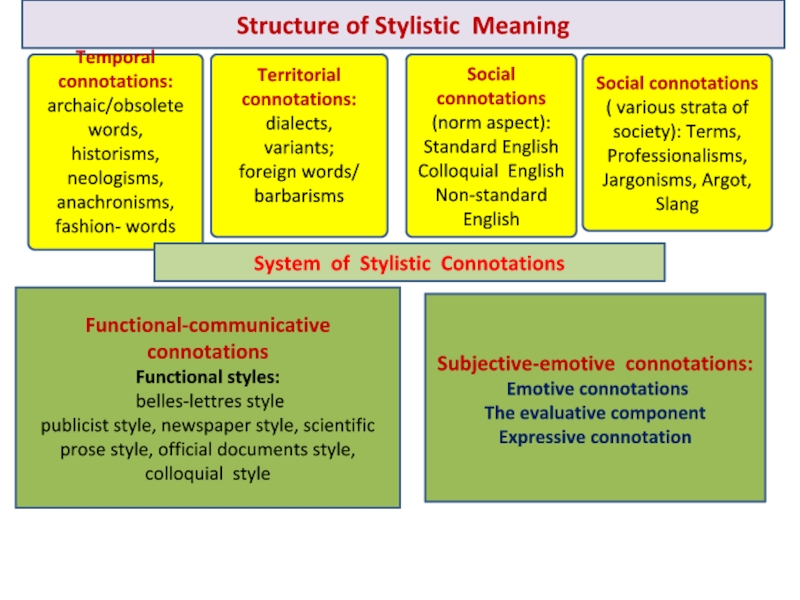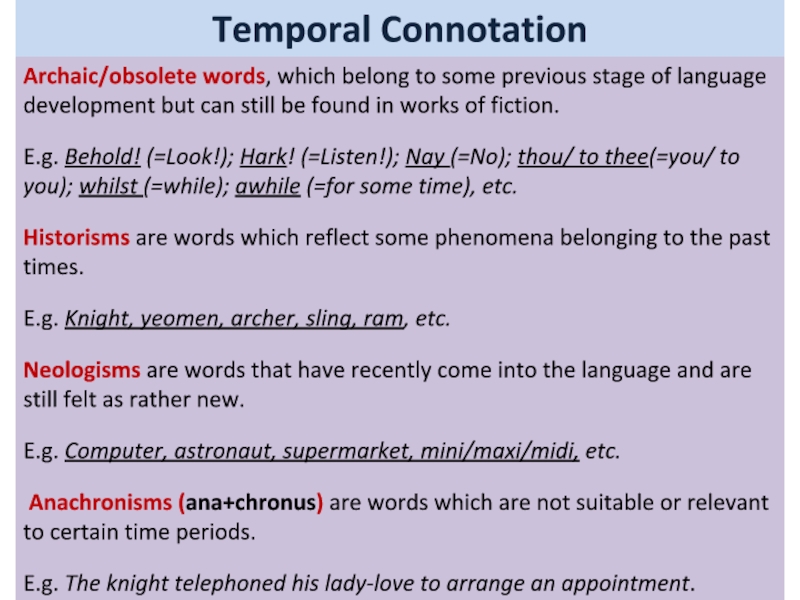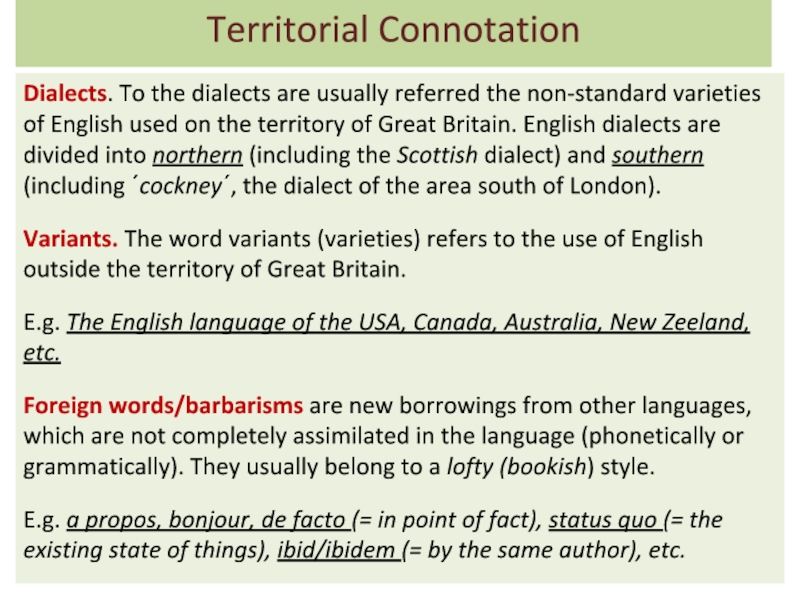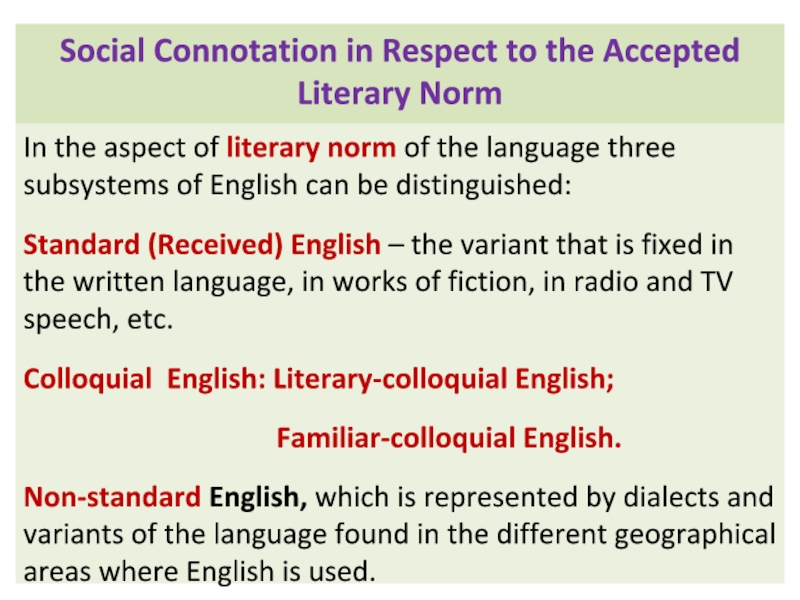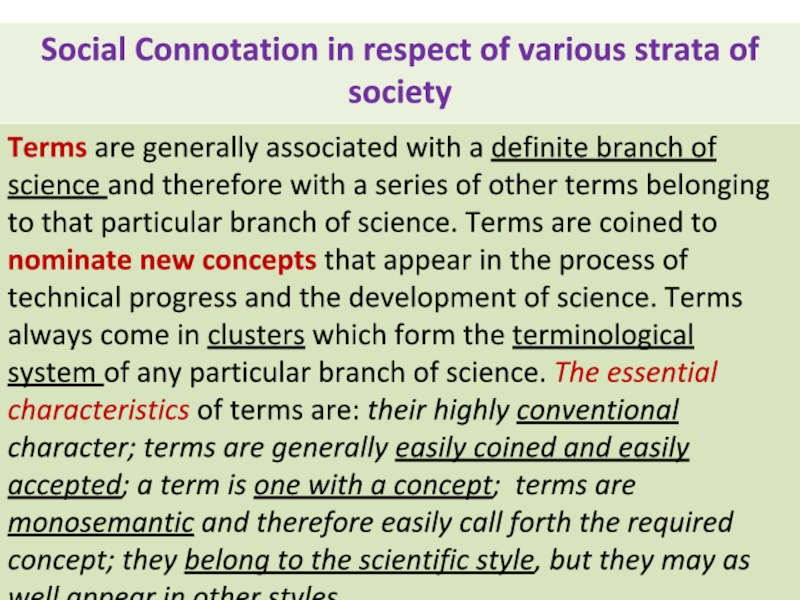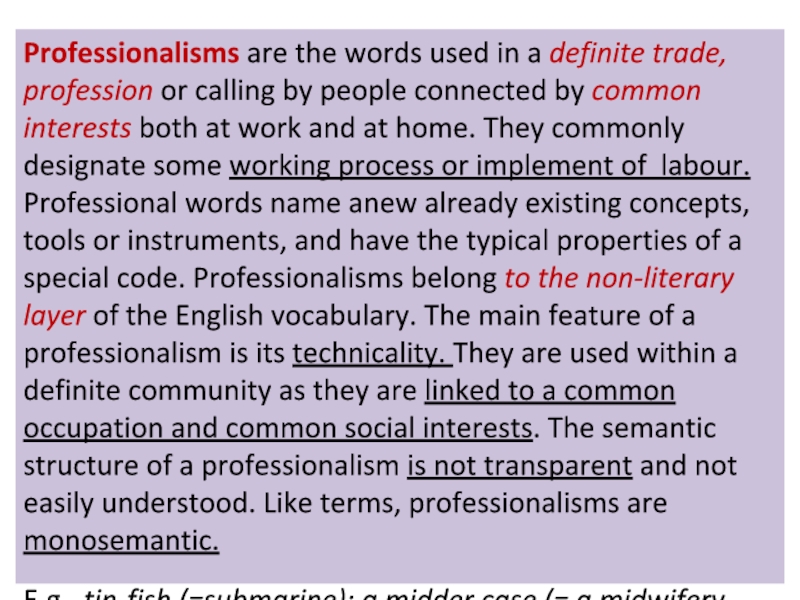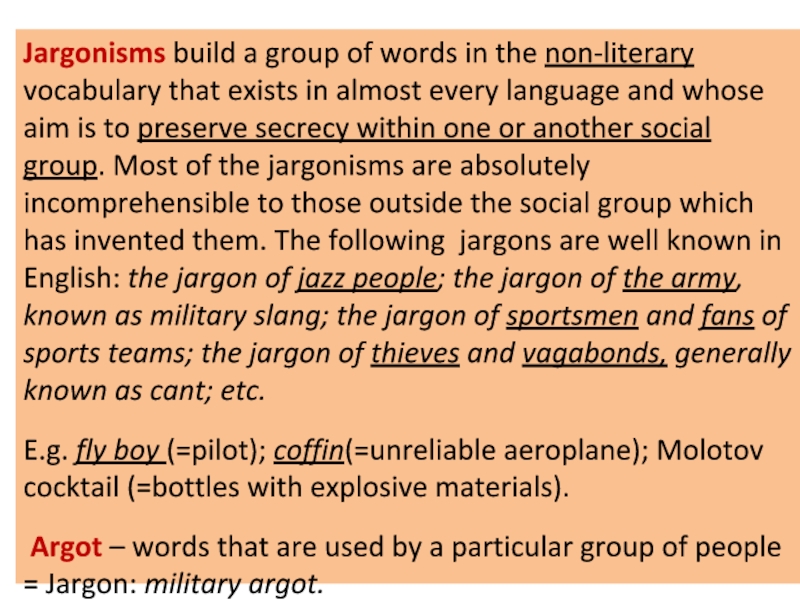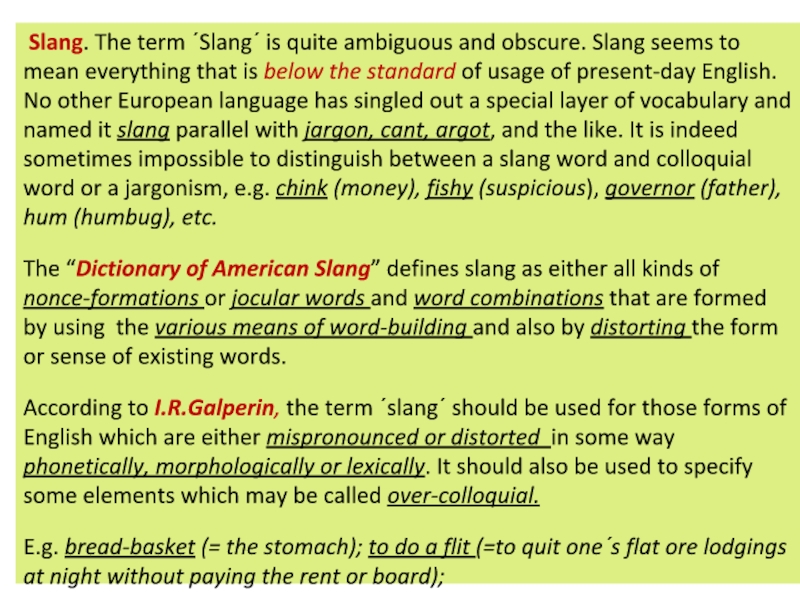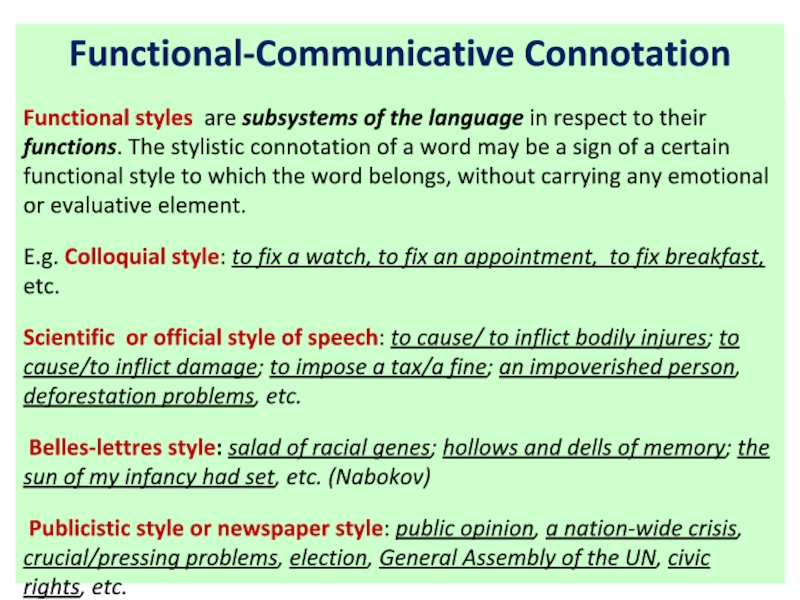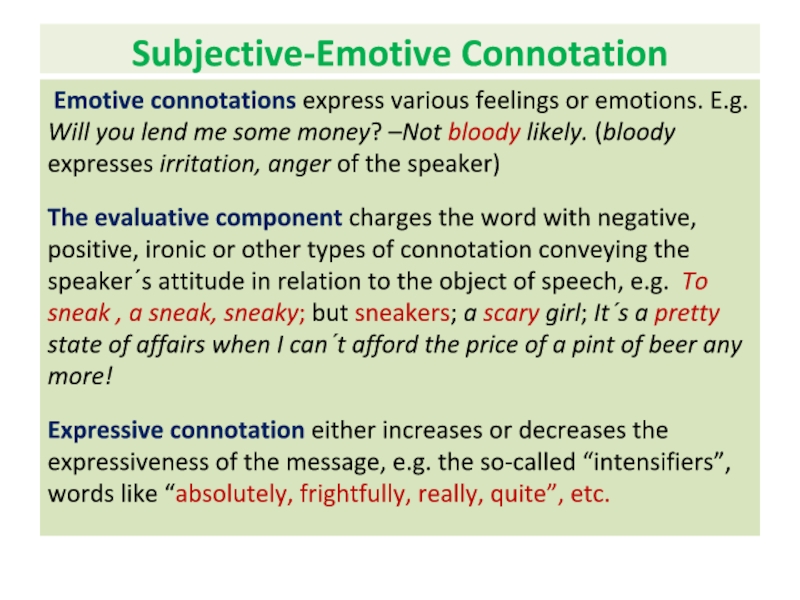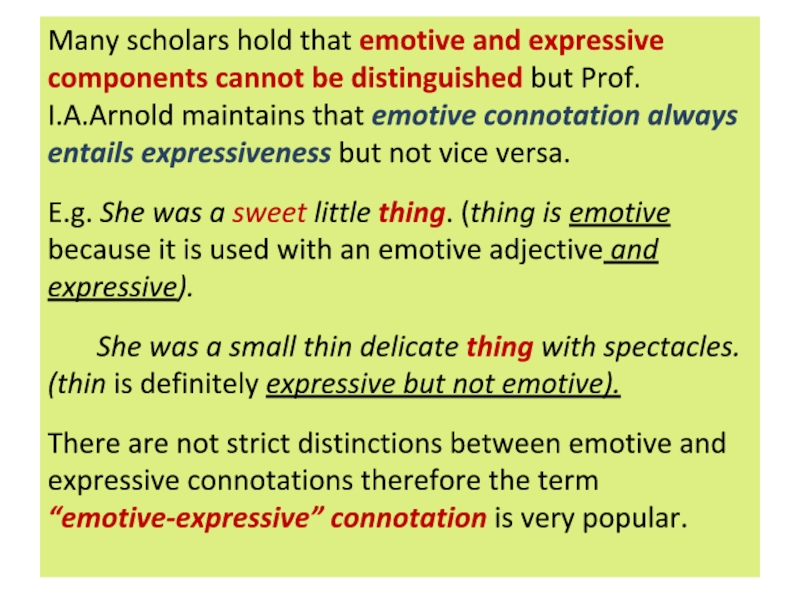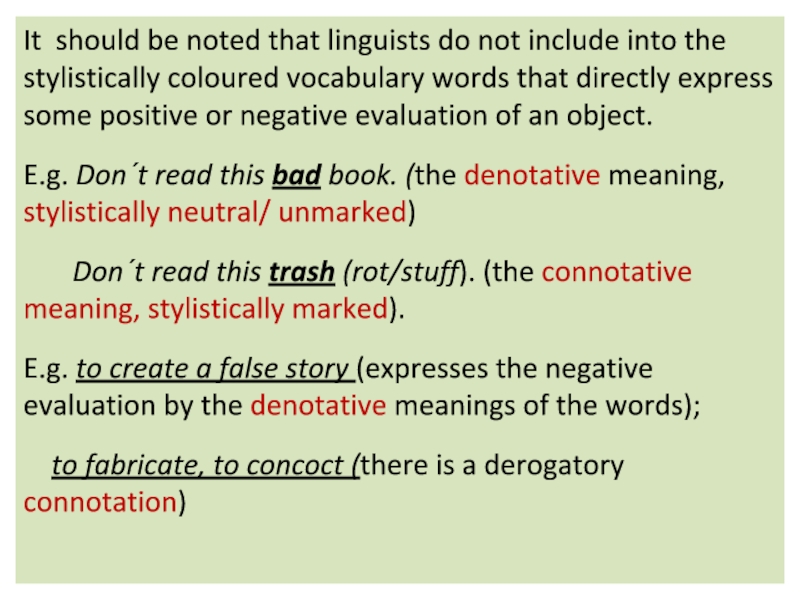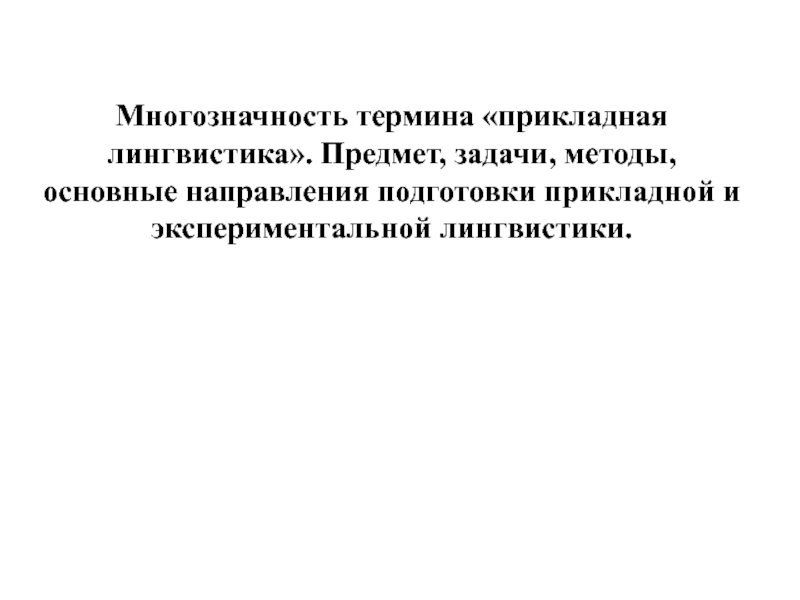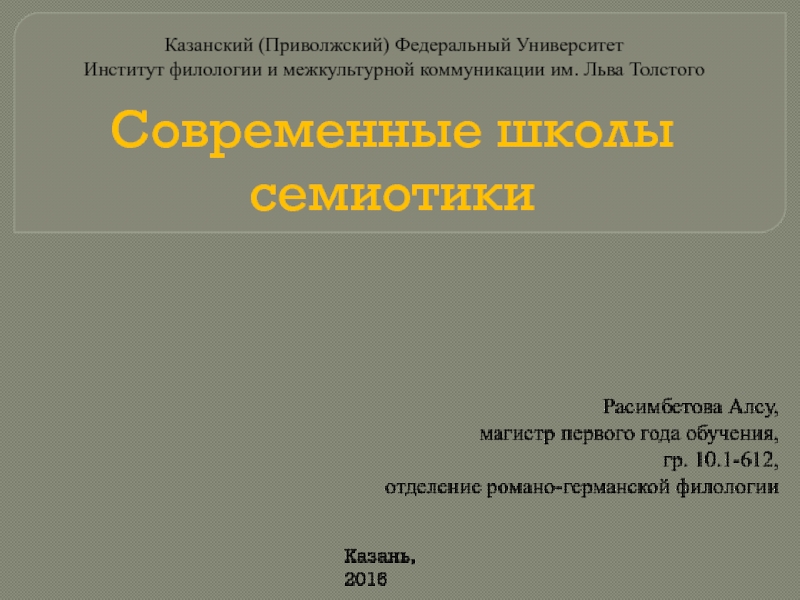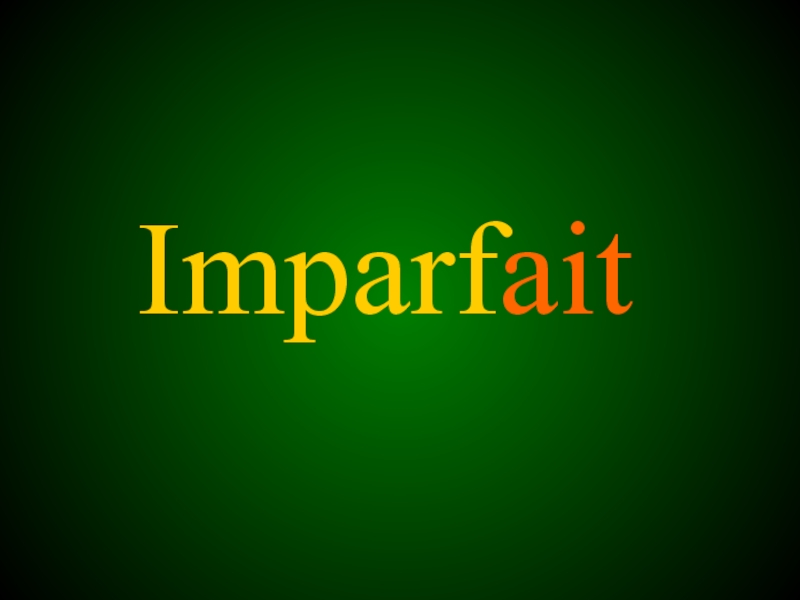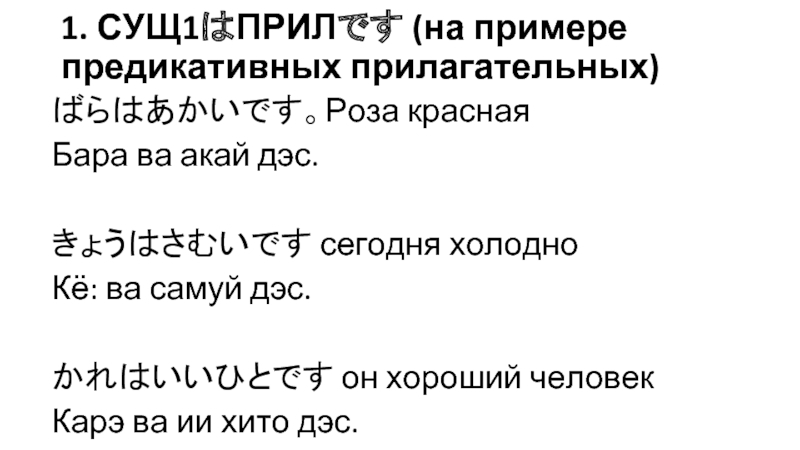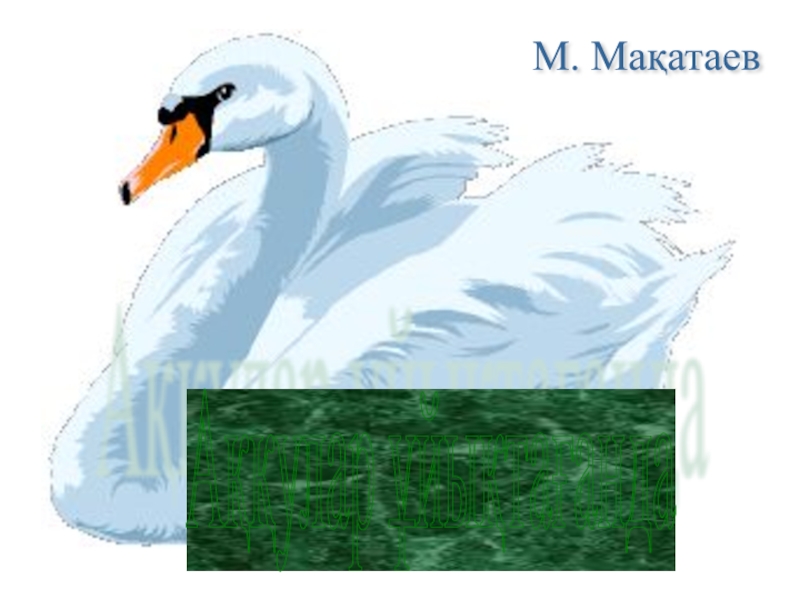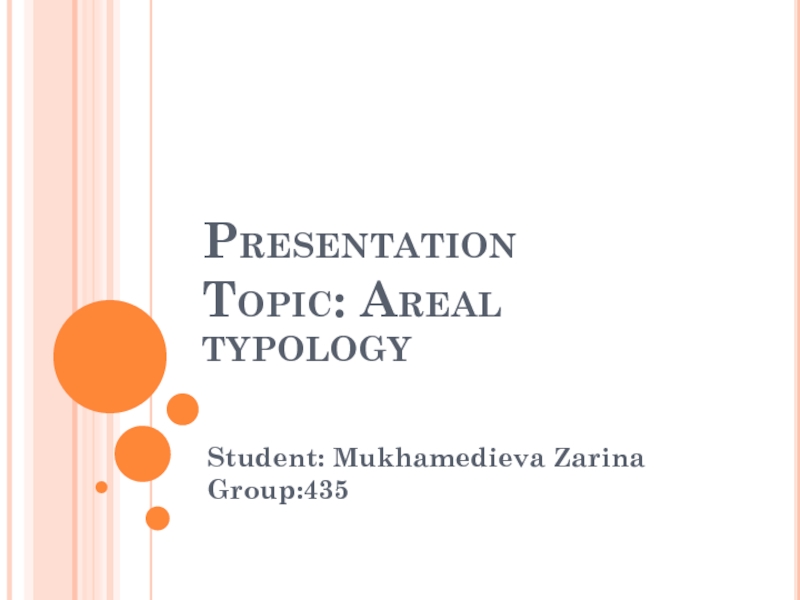- Главная
- Разное
- Дизайн
- Бизнес и предпринимательство
- Аналитика
- Образование
- Развлечения
- Красота и здоровье
- Финансы
- Государство
- Путешествия
- Спорт
- Недвижимость
- Армия
- Графика
- Культурология
- Еда и кулинария
- Лингвистика
- Английский язык
- Астрономия
- Алгебра
- Биология
- География
- Детские презентации
- Информатика
- История
- Литература
- Маркетинг
- Математика
- Медицина
- Менеджмент
- Музыка
- МХК
- Немецкий язык
- ОБЖ
- Обществознание
- Окружающий мир
- Педагогика
- Русский язык
- Технология
- Физика
- Философия
- Химия
- Шаблоны, картинки для презентаций
- Экология
- Экономика
- Юриспруденция
Stylistic-Connotative Meaning and its Specific. Denotative meaning Against a Background of Denotative Meaning of Language Forms презентация
Содержание
- 1. Stylistic-Connotative Meaning and its Specific. Denotative meaning Against a Background of Denotative Meaning of Language Forms
- 2. Language forms Stylistically neutral Use of
- 3. Structure of Stylistic Meaning Temporal connotations: archaic/obsolete
- 4. Temporal Connotation Archaic/obsolete words, which belong to
- 5. Territorial Connotation Dialects. To the dialects are
- 6. Social Connotation in Respect to the Accepted
- 7. Social Connotation in respect of various strata
- 8. Professionalisms are the words used in
- 9. Jargonisms build a group of words
- 10. Slang. The term ΄Slang΄ is
- 11. Functional-Communicative Connotation Functional styles are subsystems of
- 12. Subjective-Emotive Connotation Emotive connotations express various
- 13. meanings of the words Many scholars
- 14. It should be noted that linguists
Слайд 1
Stylistic-Connotative Meaning and its Specific
Against a Background of Denotative Meaning
Слайд 2Language forms
Stylistically neutral
Use of language forms is neutral (easy, ordinary,
Stylistically marked
There are something specific, distinctive in using these language forms. Their use is restricted on something. We should know about using restrictions (Markings, connotations) of the corresponding language unit ,e.g.: kid (colloquial), infant (official, bookish)
Their denotative meaning is identical
- temporal-historical marking; - regional (territorial) marking; social marking; functional-communicative marking; subjectiv-emotional marking:
They differ through their stylistic-connotative marking
Registers of speech
A lofty Style a neutral Style a „lower“ Style
Stylistic layers, Stylistic colouring
Solemn
Passionate
Ironic
Wrathful
Sarcastic
Jocular/humorous
Derogatory
Rude
Disapproving
Endearing, etc.
Слайд 3Structure of Stylistic Meaning
Temporal connotations:
archaic/obsolete words,
historisms, neologisms, anachronisms,
fashion- words
Territorial connotations:
dialects,
variants;
foreign words/
barbarisms
Social
Standard English
Colloquial English
Non-standard English
Social connotations ( various strata of society): Terms, Professionalisms, Jargonisms, Argot, Slang
System of Stylistic Connotations
Functional-communicative connotations
Functional styles:
belles-lettres style
publicist style, newspaper style, scientific prose style, official documents style, colloquial style
Subjective-emotive connotations:
Emotive connotations
The evaluative component
Expressive connotation
Слайд 4Temporal Connotation
Archaic/obsolete words, which belong to some previous stage of language
E.g. Behold! (=Look!); Hark! (=Listen!); Nay (=No); thou/ to thee(=you/ to you); whilst (=while); awhile (=for some time), etc.
Historisms are words which reflect some phenomena belonging to the past times.
E.g. Knight, yeomen, archer, sling, ram, etc.
Neologisms are words that have recently come into the language and are still felt as rather new.
E.g. Computer, astronaut, supermarket, mini/maxi/midi, etc.
Anachronisms (ana+chronus) are words which are not suitable or relevant to certain time periods.
E.g. The knight telephoned his lady-love to arrange an appointment.
Fashion-words, e.g. cute, cool, super, etc.
Слайд 5Territorial Connotation
Dialects. To the dialects are usually referred the non-standard varieties
Variants. The word variants (varieties) refers to the use of English outside the territory of Great Britain.
E.g. The English language of the USA, Canada, Australia, New Zeeland, etc.
Foreign words/barbarisms are new borrowings from other languages, which are not completely assimilated in the language (phonetically or grammatically). They usually belong to a lofty (bookish) style.
E.g. a propos, bonjour, de facto (= in point of fact), status quo (= the existing state of things), ibid/ibidem (= by the same author), etc.
Слайд 6Social Connotation in Respect to the Accepted Literary Norm
In the aspect
Standard (Received) English – the variant that is fixed in the written language, in works of fiction, in radio and TV speech, etc.
Colloquial English: Literary-colloquial English;
Familiar-colloquial English.
Non-standard English, which is represented by dialects and variants of the language found in the different geographical areas where English is used.
Слайд 7Social Connotation in respect of various strata of society
Terms are generally
Слайд 8
Professionalisms are the words used in a definite trade, profession or
E.g., tin-fish (=submarine); a midder case (= a midwifery case),etc.
Слайд 9
Jargonisms build a group of words in the non-literary vocabulary that
E.g. fly boy (=pilot); coffin(=unreliable aeroplane); Molotov cocktail (=bottles with explosive materials).
Argot – words that are used by a particular group of people = Jargon: military argot.
Слайд 10
Slang. The term ΄Slang΄ is quite ambiguous and obscure. Slang
The “Dictionary of American Slang” defines slang as either all kinds of nonce-formations or jocular words and word combinations that are formed by using the various means of word-building and also by distorting the form or sense of existing words.
According to I.R.Galperin, the term ΄slang΄ should be used for those forms of English which are either mispronounced or distorted in some way phonetically, morphologically or lexically. It should also be used to specify some elements which may be called over-colloquial.
E.g. bread-basket (= the stomach); to do a flit (=to quit one΄s flat ore lodgings at night without paying the rent or board);
rot (=nonsense), leggo (=let go), to agent, to altar (from nouns), etc.
Слайд 11Functional-Communicative Connotation
Functional styles are subsystems of the language in respect to
E.g. Colloquial style: to fix a watch, to fix an appointment, to fix breakfast, etc.
Scientific or official style of speech: to cause/ to inflict bodily injures; to cause/to inflict damage; to impose a tax/a fine; an impoverished person, deforestation problems, etc.
Belles-lettres style: salad of racial genes; hollows and dells of memory; the sun of my infancy had set, etc. (Nabokov)
Publicistic style or newspaper style: public opinion, a nation-wide crisis, crucial/pressing problems, election, General Assembly of the UN, civic rights, etc.
Слайд 12Subjective-Emotive Connotation
Emotive connotations express various feelings or emotions. E.g. Will
The evaluative component charges the word with negative, positive, ironic or other types of connotation conveying the speaker΄s attitude in relation to the object of speech, e.g. To sneak , a sneak, sneaky; but sneakers; a scary girl; It΄s a pretty state of affairs when I can΄t afford the price of a pint of beer any more!
Expressive connotation either increases or decreases the expressiveness of the message, e.g. the so-called “intensifiers”, words like “absolutely, frightfully, really, quite”, etc.
Слайд 13 meanings of the words
Many scholars hold that emotive and expressive
E.g. She was a sweet little thing. (thing is emotive because it is used with an emotive adjective and expressive).
She was a small thin delicate thing with spectacles. (thin is definitely expressive but not emotive).
There are not strict distinctions between emotive and expressive connotations therefore the term “emotive-expressive” connotation is very popular.
Слайд 14
It should be noted that linguists do not include into the
E.g. Don΄t read this bad book. (the denotative meaning, stylistically neutral/ unmarked)
Don΄t read this trash (rot/stuff). (the connotative meaning, stylistically marked).
E.g. to create a false story (expresses the negative evaluation by the denotative meanings of the words);
to fabricate, to concoct (there is a derogatory connotation)
